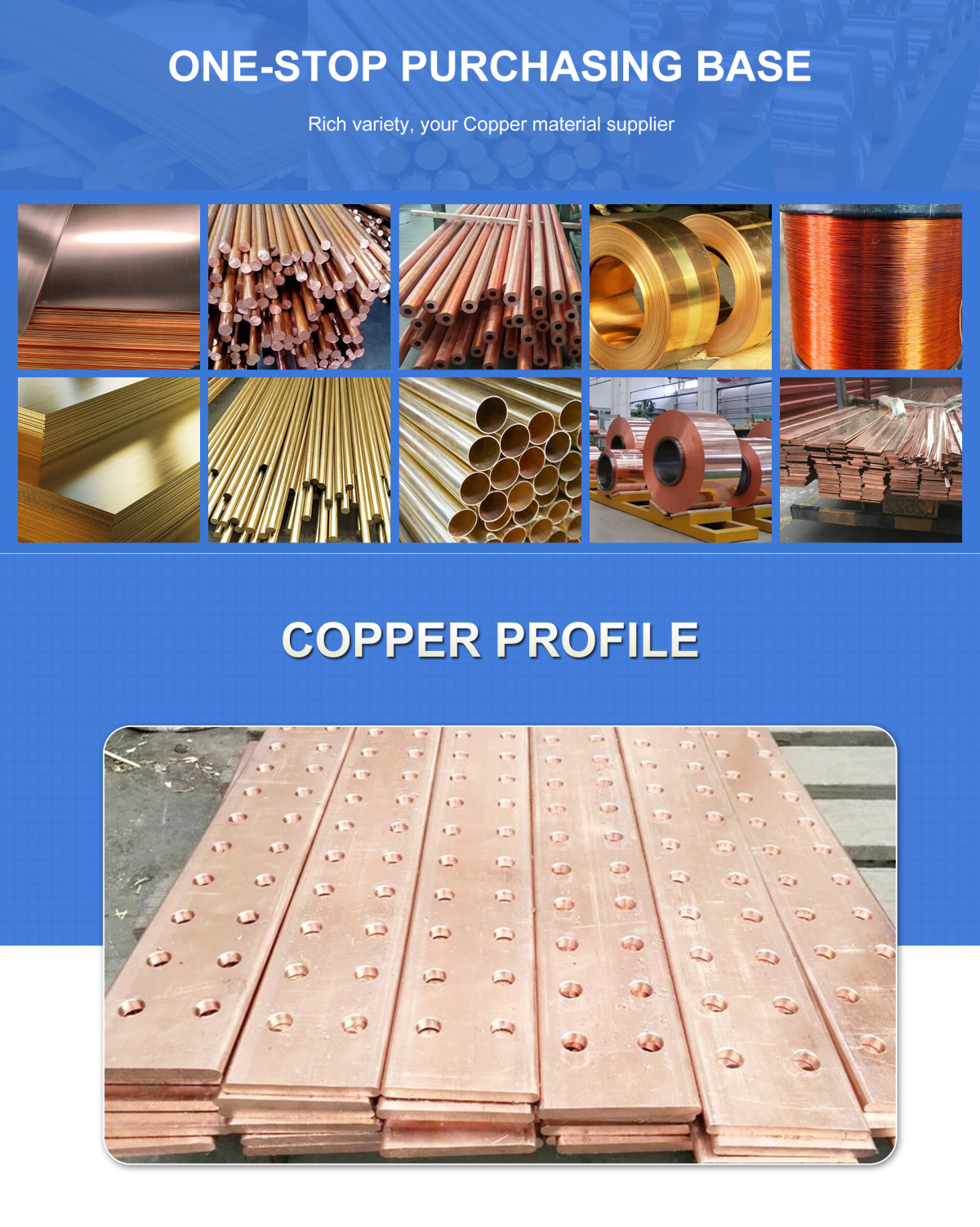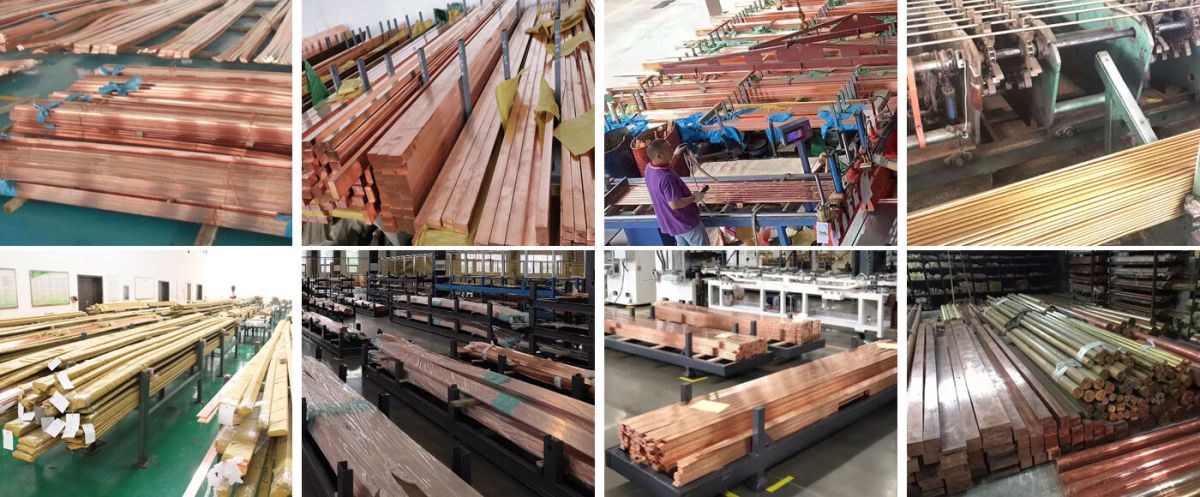
Detailed size range:
The standard shapes of C26800 brass bars are mainly round, hexagonal and square. According to ASTM standards, the diameter or width across flats ranges from 8mm to 100mm, and common lengths include 3m, 6m and 8m, which can also be customized on demand. For example:
Round bar diameter range: 8mm, 10mm, 15mm to 100mm;
Hexagonal bar width across flats range: 1.0mm or more (may be extended to 40mm for specific applications).
International standards:
The main international standards for C26800 brass bars include:
ASTM standards:
ASTM B36: covers the chemical composition and mechanical properties of brass plates, strips and bars;
ASTM B587: Applicable to pipes (but bars can refer to its general performance specifications);
ASTM B280: Involves the dimensions and tolerances of copper and copper alloy bars.
JIS H3250: Japanese Industrial Standard, which specifies the dimensional tolerances, tensile strength and other requirements of copper and copper alloy bars, and is applicable to round, hexagonal and other bars.
GB/T 4423-1992: Chinese national standard, which specifies the dimensional accuracy (±0.01mm) and mechanical properties of hexagonal brass bars.
Standards such as ASTM B187 and SAE J463 also cover the general requirements for copper alloy bars. In terms of dimensional tolerance, when the diameter or distance across the flats is less than 19mm, specific heat treatment conditions must be followed, and the tolerance range is usually ±0.01mm (high precision) to ±0.20mm (conventional).
Chemical composition (mass percentage):
Copper (Cu): 64.0%~68.5%
Zinc (Zn): Balance (about 31%~36%)
Lead (Pb): ≤0.15% (some standards such as ASTM stipulate ≤0.09%)
Iron (Fe): ≤0.05%
Other elements: such as boron (B) ≤0.01%, bismuth (Bi) ≤0.002%, etc., total impurity ≤0.45%
Mechanical properties vary significantly with processing conditions (such as annealing, cold working), and common conditions include H00 (soft state) to H10 (full hard state). Take the typical state as an example:
Annealed state (OS035):
Tensile strength: 345 MPa (50 ksi)
Elongation: 60%
Shear strength: 234 MPa (34 ksi)
Semi-hard state (H02):
Tensile strength: 607 MPa (88 ksi)
Elongation: 15%
Full hard state (H04):
Tensile strength: 758 MPa (110 ksi) or 510 MPa (74 ksi) (different test standards or data sources)
Elongation: 8%
Yield strength: 420 MPa (60 ksi)
Brinell hardness: 80 HB
Other conditions (H08):
Tensile strength: 883 MPa (128 ksi)
Elongation: 3%
Physical properties:
Melting point: liquidus 930°C (1710°F), solidus 904°C (1660°F)
Density: 8.1~8.47 g/cm³
Electrical conductivity: 27% IACS (International Annealed Copper Standard)
Thermal conductivity: 116~120 W/m·K
Coefficient of thermal expansion: 20~20.3 µm/m·°C (70~572°F)
Application and processing characteristics:
Corrosion resistance: good, but avoid contact with ammonia, mercury or acidic media to prevent stress corrosion or dezincification.
Processing performance:
Excellent cold working ability, suitable for stamping, drawing and other processes.
Poor hot forming ability, recommended annealing temperature 540~600°C (annealed state) or 800~1300°F (stress relief after cold working).

Production process and product advantages of C26800 copper rod:
1. Production process
Raw material processing and smelting
Raw materials usually use electrolytic copper, zinc ingots and scrap copper (need to undergo radiation detection and manual sorting to remove impurities).
The smelting process is carried out in an electric furnace at a temperature of about 900℃, and a slag remover is added to optimize the purity of the molten metal. After smelting, it enters the insulation furnace.
Forming process
Traditional process: After ingot casting, it is formed by hot extrusion or stretching, which is suitable for products such as copper bars.
Short process new process: using copper wire rod continuous extrusion technology to improve production efficiency and material density.
Specific steps include: casting → peeling wire drawing → cutting → cold processing (such as stamping, lathe processing) → surface treatment (grinding, cleaning) → assembly.
Automation and quality control
Domestic mainstream enterprises use modern technologies such as continuous casting and computer control to ensure that the surface smoothness, tensile strength and hardness of the products meet the standards.
The scraps and waste liquid generated during the production process will be recycled or disposed of in compliance.
2. Product advantages
Excellent processing performance
Excellent plasticity, suitable for complex cold stamping and deep drawing (such as radiator shell, bellows).
Easy to cut, weld and braze, supports a variety of processing methods (oxyacetylene welding, arc welding, etc.).
Mechanical and physical properties
High strength (tensile strength ≥390 MPa), while maintaining good electrical and thermal conductivity.
After cold forming, the hardness can be adjusted through different tempering states (O/1/4H/H, etc.) to meet diverse needs.
Corrosion resistance
Good corrosion resistance in atmospheric and freshwater environments, but care should be taken to avoid contact with ammonia, mercury or acidic media to prevent dezincification.
Some manufacturers improve stress corrosion resistance by optimizing zinc content (33%) and adding trace elements (such as lead ≤0.03%).
Wide application areas
Applicable to electronic connectors, automotive radiator cores, building hardware, decorative parts and springs.
Q1:Do you provide samples? Is it free or extra?
A1:Yes, we can provide samples free of charge and the customer will pay the freight.
Q2:What if I don't have export experience ?
A2:We have reliable forwarder agent which can ship items to you by sea/air/Express to your doorstep. Any way, we will help you choose the most suitable shipping service.
Q3:How long is your lead time?
A3:If it is in stock, it is usually 5-10 days. Or, if there is no inventory, 15 days, depending on the quantity.
Q4:What are your terms of payment?
A4:30% T/T deposit in advance, 70% T/T balance within 5 days after B/L copy, 100%.Irrevocable L/C at sight, 100% Irrevocable L/C after receive B/L 30-120 days, O/A.
Q5:How is your technical support?
A5:We provide lifetime online support through Whatsapp/ Skype/ Wechat/ Email. Any problem after delivery, we will offer you call anytime.
Welcome To Your Inquiry
What can we help you?
RELATED PRODUCTS












